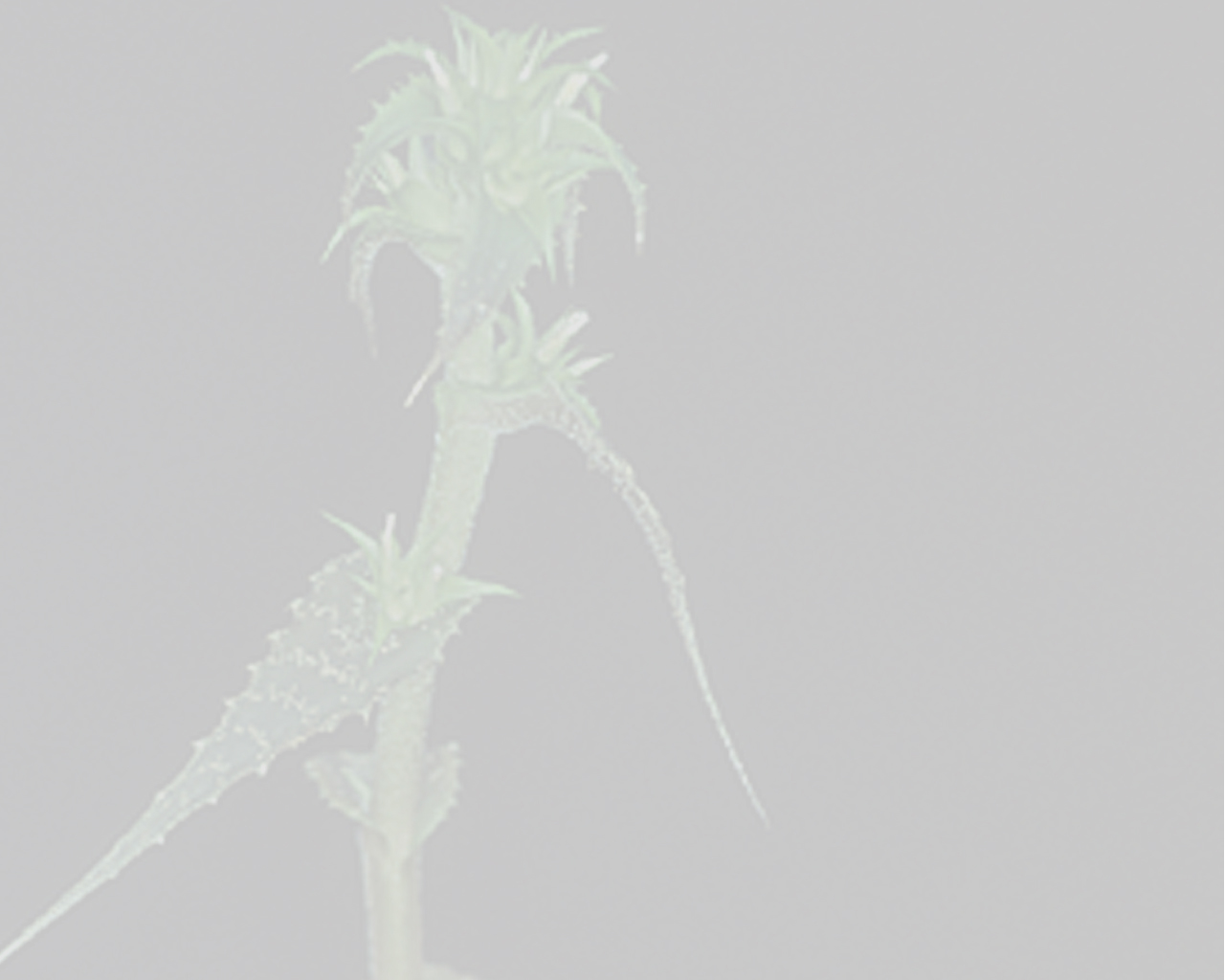


plant epilithic or saxicolous in campos rupestres, short to distinct caulescent, flowering 15–20 cm high, propagating by 1–2 short shoots produced at the base of the inflorescence. leaves 20–25 in number, densely and evenly arranged along the stem, spreading-recurved; sheath inconspicuous, subreniform, 1.3–1.5 × 2.5–2.7 cm, whitish, thin in texture toward the base, glabrous except for the densely white lepidote and spinulose distal part, densely and conspicuously nerved; blade narrowly triangular, 13–15 cm long, ca 2 cm wide at the base, coriaceous, flat near the base and channeled toward the apex, densely and coarsely white lepidote on both sides, the color completely obscured by the trichomes, sometimes glabrescent adaxially, abaxially nerved, apex caudate, not pungent, margins subdensely spinulose; spines narrowly triangular, straight or the basal ones slightly retrorse and the upper ones slightly antrorse, reddish-castaneous, 0.5–1 mm long, 0.3–0.5 mm wide at the base, 3–10 mm apart. inflorescence compound, sessile, elongate, 6–7 cm long, forming a compact glomerulate distal spike; primary bracts foliaceous, abruptly reduced in length at the inflorescence apex but distinctly exceeding the flower fascicles; fascicles 11–13 in number, densely arranged, sessile, pulvinate, 13–15 mm long (excluding the petals), 8–14 mm wide, 5–7 mm thick, 4–9-flowered; floral bracts triangular to ovate, acute to acuminate, 9–10 × 4–7 mm, the outermost ones distinctly carinate, the inner ones ecarinate, about equaling to slightly shorter than the sepals, greenish, nerved, subdensely white lepidote with fimbriate trichomes, thin in texture, not pungent, margins minutely spinulose near the apex. flowers 16–17 mm long, sessile, densely arranged, fragrant; sepals ovatelanceolate, apex acuminate, not pungent, 5–6 × 2–2.5 mm, free, entire, greenish, soon drying during anthesis, thin in texture, densely white lepidote with fimbriate trichomes, ecarinate; petals narrowly spathulate, acute, 11–12 × 4.5–5 mm, free, suberect to subspreading toward the apex and forming an open, fan blade-like corolla at anthesis, greenish at the base and white toward the apex, unappendaged but bearing 2 conspicuous longitudinal callosities about equaling the antepetalous filaments; callosities sparsely glandular. stamens: filament terete, the antepetalous ones ca 4 mm long, the antesepalous ones ca 6 mm long; anther 1.5–2 mm long, base bilobed, apex obtuse, dorsifixed at 1/4 of its length above the base, the antesepalous ones exceeding the antepetalous ones and nearly equaling the stigma; pollen sulcate, broadly ellipsoidal, ca 45 μm long, sulcate, the sulcus broad, sparsely covered with small microreticulate exine elements, with margins weakly defined, exine microreticulate. pistil white; stigma simpleerect, lobes suberect, u-shaped conduplicate, elongated, ca 1 mm long, white, margins inconspicuously crenulate, without papillae; ovary obovoid, subtrigonous, 4–5 × 3–3.5 mm, greenish, coarsely white lepidote of fimbriate trichomes; epigynous tube lacking; placentation apical; ovules few, obtuse. fruits subglobose, 5–6 × 4.5–5 mm, greenish, densely white lepidote, sepals about as long as, to slightly longer (ca; 1.2 times) than the fruit; seeds 3–8 per fruit, 2–3 × 1–1.5 mm.Edited from (25-08-2017): Leme et al. 2017b. (protologue) New circumscription of Cryptanthus and new Cryptanthoid genera and subgenera (Bromeliaceae: Bromelioideae) based on neglected morphological traits and molecular phylogeny .